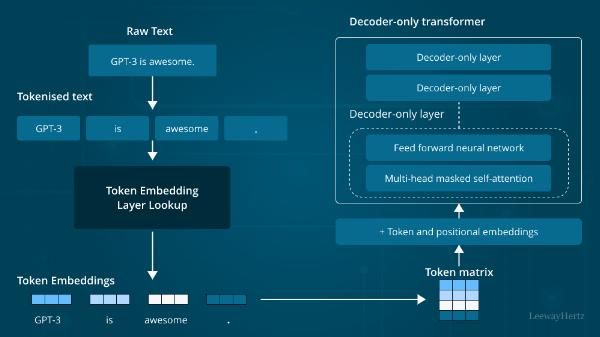What are the Key Benefits of Using a Hybrid Approach to Vector Embeddings in NLP?

Strong 8k brings an ultra-HD IPTV experience to your living room and your pocket.
Natural language processing (NLP) has gone through a revolution due to vector embeddings, allowing computers to comprehend human speech's nuances. Conventional methods, such as word2vec and GloVe, have delivered state-of-the-art outcomes for an array of NLP workloads. These approaches do not, however, represent challenging semantic connections, and they need help representing terms that are not part of the vocabulary. Researchers have resorted to hybrid approaches, which incorporate the benefits of several vector embedding techniques, to overcome these restrictions. In particular, the use of retrieval augmented generation (RAG) has shown promising results in addressing these limitations. This article will discuss the main advantages of adopting a hybrid approach to vector embeddings in NLP and how NLP models may perform better as a result.
What is a Hybrid Approach to Vector Embedding?
By combining the advantages of many vector embedding approaches, a hybrid approach to vector embeddings can produce a more accurate and reliable representation of words in a vector space. To capture a greater variety of semantic linkages and subtleties in language, this methodology makes use of the benefits of many embedding techniques, including word2vec, GloVe, and FastText. Hybrid techniques can capture complicated semantic links, handle terms that are not part of the lexicon well, and enhance the overall performance of NLP models by mixing several methods.
There are plenty of ways to apply hybrid approaches: you may use a weighted mixture of the vectors or concatenate or average the vectors from multiple embedding methods. To further improve the representation of words, some hybrid techniques also include additional data, such as syntactic or semantic aspects. Hybrid approaches can offer a more complete and precise depiction of language by combining the positive aspects of several approaches, which may improve efficiency when performing NLP applications.
Key Benefits of the Hybrid Approach
The hybrid approach to vector embeddings offers several key benefits that can significantly improve the performance of NLP models.
Improved Representation of Semantic Applications
A wider range of semantic relationships and linguistic nuances are accessible with the hybrid approach to vector embeddings. Hybrid techniques, which combine various embedding methods, can represent words with multiple meanings, antonyms, synonyms, and hyponyms better. This enhances performance in tasks like text classification, sentiment assessment, and question answering.
Effective Handling of Out-of-Vocabulary Words
Hybrid approaches can handle out-of-vocabulary (OOV) words more effectively. Traditional embedding methods often struggle to represent OOV words, which can lead to poor performance in NLP tasks. Hybrid approaches, on the other hand, can leverage the strengths of different methods to provide a more robust representation of OOV words.
Improved Robustness and Flexibility
Hybrid approaches offer improved robustness and flexibility, as they can adapt to different datasets and tasks. By combining multiple methods, hybrid approaches can capture a wider range of linguistic features and relationships, making them more versatile and effective in a variety of NLP applications.
Better Interpretability and Explainability
NLP models may be easier to understand and comprehend when using hybrid methodologies. Hybrid approaches simplify spotting biases and mistakes in NLP models by integrating many techniques to offer a more thorough knowledge of how words are represented in a vector space.
Challenges and Future Directions
Notwithstanding the advantages of hybrid methods to vector embeddings, several issues still need to be resolved. Complicating different approaches can be complicated, which can result in higher computing expenses and trouble adjusting hyperparameters. This is one of the primary limitations. A further difficulty is that efficient training of hybrid models requires substantial volumes of high-quality training data.
Prospective avenues for hybrid approaches encompass investigating novel techniques for amalgamating embeddings, such as models based on graphs and attention-based processes. Furthermore, further studies are needed to determine the best ways to include hybrid embeddings into downstream NLP activities like text creation and language translation. Further research should focus on creating hybrid methods that are more scalable and efficient, capable of handling big datasets and high-dimensional vector spaces.
Conclusion
In conclusion, hybrid approaches to vector embeddings offer a promising solution for improving the performance of NLP models. By combining the strengths of different methods, hybrid approaches can provide more robust and flexible representations of words and phrases. As the field of NLP continues to evolve, hybrid approaches will likely play an increasingly important role.
With the development of platforms like Vectorize.io, which provides a unified interface for working with vector embeddings, it is becoming easier for researchers and practitioners to experiment with and deploy hybrid approaches. As a result, we can expect to see significant advances in the field of NLP in the coming years.
Note: IndiBlogHub features both user-submitted and editorial content. We do not verify third-party contributions. Read our Disclaimer and Privacy Policyfor details.


